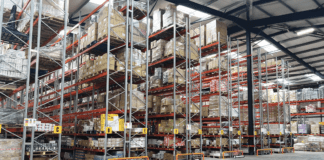IGD is predicting that the burgeoning food-to-go market will be worth £21.7bn by 2021, up from £16.1bn this year, offering significant opportunities for growth.
IGD splits the food-to-go market into five segments, with all expected to increase significantly by 2021:
- Food-to-go specialists have been growing their scale and impact across the UK, and will be the strongest climbers, with a predicted worth of up to £7.1bn in five years;
- Quick service restaurants (QSRs) will be the second-largest segment of food-to-go, and will be worth up to £6bn by 2021;
- Coffee specialists will be the second-fastest growers, and could be worth as much as £3.9bn by 2021;
- Food-to-go sales at convenience, forecourts and other retailers are predicted to be worth as much as £3.3bn in five years’ time;
- Supermarkets and hypermarkets will also expand their food-to-go ranges over the next five years, to be worth up to £1.4bn
Joanne Denney-Finch, IGD chief executive, said: “Over the next five years, we are forecasting growth of up to 35% for the overall food-to-go market, providing there is a favourable economic backdrop. Suppliers are seeking ways to expand, so the growth potential of this dynamic and rapidly shifting sector represents a really clear opportunity.
“However, food-to-go is a different market to grocery retail, and requires a distinct approach to succeed.”
Looking at food-to-go and coffee specialists, Denney-Finch said: “Changing shopper habits will contribute greatly towards the strong growth of these two segments. We are seeing a rise in coffee culture, and our research shows that almost half (48%) of drink on-the-go shoppers are purchasing hot drinks.
“Shoppers are also beginning to adopt food-to-go as a lifestyle choice which presents a clear opportunity for these operators, and coffee specialists are responding to this by focusing more on food and improved lunchtime options.”
As for the growth of QSRs, Denney-Finch said: “Almost all shoppers (92%) say that speed of service is key to their food-to-go experience, which is partly why quick service restaurants are forecasted to be the second-biggest segment in value by 2021.
“A new, modern generation of burger bars and an increased focus on healthier options is really helping to drive this part of the market. Some 20% of shoppers are purchasing lunch on-the-go more than twice a week, which is another key driver of growth for QSR operators.”
And, lastly, on the subject of food-to-go growth in supermarkets, hypermarkets, convenience stores and forecourts, Denney-Finch added: “Busy, flexible lifestyles mean shoppers are shopping little and often, and this culture is causing a boom in food-to-go for convenience stores, which have a strong forecasted annual compound growth of 5.8%.
“To ensure they meet this demand, we have seen convenience retailers introducing specialist food-to-go counters in their stores, as well tailoring their ranges to the different times of the day shoppers purchase this category.
“Supermarkets and hypermarkets are also increasingly thinking about their food-to-go offering and have been trialling new formats, counters and ideas in-store. It’s obviously appealing to shoppers, as our research shows that supermarkets are the most popular place to buy a drink on-the-go (30%) and breakfast on-the-go (27%).”







